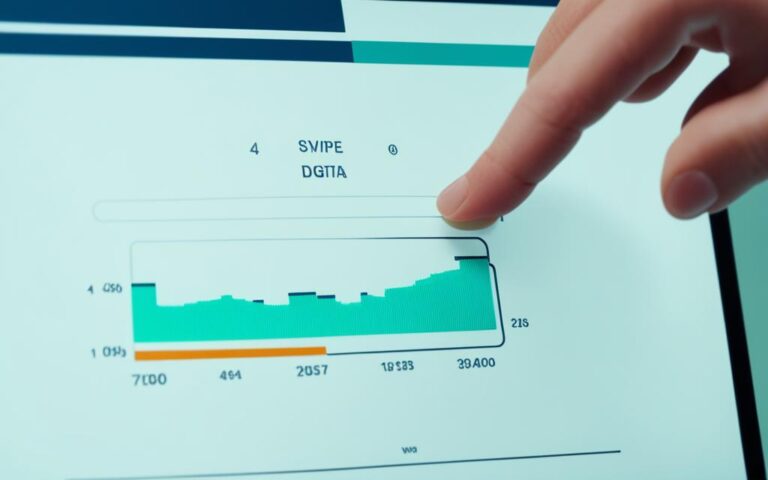Data Destruction: A Key Strategy in Preventing Data Leakage in Cloud Storage
Protecting sensitive data stored in cloud storage is of utmost importance in today’s digital landscape. The risk of data breaches and unauthorized access is a constant concern for businesses, as data leakage can have severe consequences, including financial losses and damage to reputation.
Data destruction is a crucial strategy to prevent data breaches and ensure the security of cloud storage. By permanently erasing or destroying data, organizations can eliminate the possibility of unauthorized access and leakage. Implementing data destruction policies and practices helps companies safeguard their digital assets and comply with data protection regulations.
In this article, we will explore the importance of data destruction in preventing data leakage in cloud storage, the components of an effective data protection strategy, and the role of Cloudian HyperStore in enhancing data protection and privacy.
Join us as we delve into the world of data destruction and discover how it can be a key ally in safeguarding your sensitive information and preventing data breaches in cloud storage.
Understanding Data Protection and Privacy
Data protection and data privacy are related but distinct concepts. Data privacy refers to who has access to data, while data protection focuses on the tools and policies implemented to restrict access. Compliance regulations play a crucial role in enforcing data privacy and data protection measures. Companies must take steps to protect private user data, prevent data breaches, and meet regulatory requirements. Technologies such as data loss prevention, encryption, and endpoint protection are used to ensure data protection and privacy.
Organizations must prioritize data protection to safeguard sensitive information from unauthorized access. Data breaches can lead to significant financial losses, reputational damage, and legal consequences. By implementing robust data protection measures, such as access controls and encryption, companies can prevent unauthorized access and maintain the integrity and confidentiality of their data.
The Difference Between Data Privacy and Data Protection
Data privacy refers to the collection, use, and sharing of personal information by organizations. It focuses on giving individuals control over their data and ensuring that only authorized parties have access to it. Data protection, on the other hand, involves implementing measures to secure data from unauthorized access, alteration, or destruction. It encompasses both technical and organizational safeguards to protect data throughout its lifecycle.
Compliance with data protection regulations is essential to avoid penalties and maintain consumer trust. Regulations such as the EU General Data Protection Regulation (GDPR) and the California Consumer Privacy Act (CCPA) impose strict requirements on how organizations handle personal data. Companies must ensure they have appropriate data protection policies and procedures in place to comply with these regulations and protect their users’ privacy.
Companies must prioritize data protection and privacy to prevent data breaches, maintain regulatory compliance, and safeguard their reputation.
Data Protection Technologies and Practices
Various technologies and practices are employed to ensure data protection and privacy. These include:
- Data loss prevention (DLP) solutions: These technologies help identify, monitor, and protect sensitive data, ensuring it is not lost, leaked, or accessed by unauthorized parties.
- Encryption: By encrypting data at rest and in transit, companies can secure it and make it unreadable to unauthorized individuals.
- Endpoint protection: Endpoint security solutions protect devices such as laptops, desktops, and mobile devices from malware, unauthorized access, and data breaches.
Implementing these technologies, along with robust data protection policies and procedures, is crucial for organizations to meet compliance regulations and secure sensitive information.
Compliance Regulations and Data Protection
Compliance regulations serve as guidelines for organizations to protect data privacy and ensure data protection. These regulations vary by country and industry, and failure to comply can result in significant fines and legal consequences. Some key compliance regulations include:
| Regulation | Description |
|---|---|
| General Data Protection Regulation (GDPR) | An EU regulation that governs the protection and privacy of European citizens’ personal data. |
| California Consumer Privacy Act (CCPA) | A California state law that gives Californian residents control over their personal information and requires businesses to comply with specific data protection requirements. |
| Health Insurance Portability and Accountability Act (HIPAA) | A U.S. federal law that sets privacy and security standards for protected health information (PHI) and imposes obligations on healthcare providers, health plans, and business associates. |
Organizations must stay up-to-date with these regulations, conduct regular audits, and tailor their data protection strategies to ensure compliance.
The Importance of Data Destruction in Data Protection Strategies
Data destruction plays a critical role in ensuring the security of sensitive information and safeguarding digital assets. It involves permanently erasing or destroying data to eliminate the risk of unauthorized access or leakage. By implementing effective data destruction practices, companies can mitigate the threat of data breaches and uphold the integrity and confidentiality of their valuable data.
Data destruction is essential for several reasons:
- Protecting Sensitive Information: Data destruction ensures that confidential and sensitive data, such as personal information, financial records, and trade secrets, cannot be accessed by unauthorized individuals. By permanently erasing or destroying this data, organizations can prevent its misuse and safeguard their reputation.
- Preventing Data Breaches: In today’s digital landscape, data breaches are a significant concern. Deleted or discarded data can still be recoverable if not properly destroyed. Data destruction guarantees that information cannot be retrieved, even if storage devices fall into the wrong hands. This mitigates the risk of data breaches and the associated financial and reputational damages.
- Complying with Data Protection Regulations: Data protection regulations, such as the General Data Protection Regulation (GDPR), require organizations to implement appropriate security measures and protect personal data. Data destruction is an essential aspect of compliance, as it ensures that data is removed in a way that complies with regulatory standards and obligations.
- Reducing Storage Costs: Unnecessary storage of old or irrelevant data not only takes up valuable resources but also increases the risk of data breaches. By securely destroying unnecessary data, organizations can optimize storage space, reduce costs, and simplify their data management processes.
Implementing data destruction practices as part of a comprehensive data protection strategy is crucial for maintaining the confidentiality, integrity, and availability of sensitive information. By making data unrecoverable, even in compromised storage devices, companies can significantly enhance their overall security posture.
“Effective data destruction practices play a vital role in preventing unauthorized access to sensitive information and minimizing the risk of data breaches. By permanently erasing or destroying data, organizations can protect their digital assets and comply with data protection regulations.”
It is important for companies to choose data destruction methods that align with their specific needs and adhere to industry best practices. This may include secure data wiping, physical destruction of storage devices, or degaussing. By selecting the appropriate data destruction techniques and technologies, organizations can ensure that their data is irretrievable and effectively mitigate the risk of data leakage.
Data Destruction Methods
There are various data destruction methods available, each offering different levels of security and effectiveness. Some common data destruction methods include:
| Data Destruction Method | Description |
|---|---|
| Physical Destruction | Physical destruction involves physically damaging the storage device to render it unusable. This method ensures that data is completely inaccessible and irrecoverable. |
| Degaussing | Degaussing uses a powerful magnetic field to erase data from magnetic storage devices such as hard drives and magnetic tapes. It permanently removes the magnetic signatures, making data recovery impossible. |
| Secure Data Wiping | Secure data wiping utilizes specialized software or tools to overwrite the data on storage devices with random characters or patterns. This process ensures that the original data is erased and replaced, leaving no traces for recovery. |
Organizations should consider their specific requirements, the sensitivity of the data, and compliance regulations when selecting the most appropriate data destruction method for their data protection strategies.
Implementing data destruction practices is crucial for organizations to maintain the confidentiality and security of their data. By permanently erasing or destroying data, companies can prevent unauthorized access, minimize the risk of data breaches, and protect their valuable digital assets.
The Components of an Effective Data Protection Strategy
An effective data protection strategy incorporates various components that work together to ensure the security and integrity of data. These components include:
- Data Lifecycle Management: This component involves managing data from its creation to its deletion or archiving, ensuring that data is handled appropriately at every stage.
- Data Risk Management: This component focuses on identifying potential risks to data security and implementing measures to mitigate those risks.
- Data Backup and Recovery: A crucial component that involves regularly backing up data and establishing processes for quick and efficient data restoration in the event of loss or corruption.
- Data Access Management Controls: This component includes implementing access controls, user authentication, and authorization mechanisms to ensure that only authorized personnel can access the data.
- Data Storage Management: This component focuses on the efficient storage and organization of data, utilizing appropriate storage solutions and technologies.
- Data Breach Prevention: A vital component that involves implementing preventive measures, such as encryption and intrusion detection systems, to minimize the risk of data breaches.
- Confidentiality, Integrity, and Availability: These three components ensure that data remains confidential, accurate, and available to authorized users when needed.
- Data Protection Policies and Procedures: Establishing comprehensive policies and procedures that outline data protection practices and educate employees on their responsibilities.
- Standards and Regulatory Compliance: Adhering to industry standards and complying with data protection regulations to ensure legal and ethical data handling.
- Monitoring and Reviewing: Continuously monitoring data protection measures, conducting regular security audits, and reviewing strategies to identify areas for improvement or potential vulnerabilities.
By integrating these components into their data protection strategy, organizations can develop a comprehensive and effective approach to safeguard their valuable data assets and comply with relevant regulations.
Example Table: Components of an Effective Data Protection Strategy
| Component | Description |
|---|---|
| Data Lifecycle Management | Managing data throughout its lifecycle, including creation, usage, archiving, and deletion. |
| Data Risk Management | Identifying and mitigating potential risks to data security. |
| Data Backup and Recovery | Regularly backing up data and establishing processes for quick data restoration in case of loss or corruption. |
| Data Access Management Controls | Implementing access controls and user authentication mechanisms to ensure authorized data access. |
| Data Storage Management | Efficiently managing data storage and organization using suitable technologies and solutions. |
| Data Breach Prevention | Implementing preventive measures such as encryption and intrusion detection systems to minimize the risk of data breaches. |
| Confidentiality, Integrity, and Availability | Ensuring data remains confidential, accurate, and available to authorized users as needed. |
| Data Protection Policies and Procedures | Establishing comprehensive policies and procedures to guide data protection practices. |
| Standards and Regulatory Compliance | Adhering to industry standards and complying with data protection regulations. |
| Monitoring and Reviewing | Continuously monitoring data protection measures, conducting security audits, and reviewing strategies for improvement. |
Data Destruction Practices within a Data Protection Strategy
Data destruction practices are fundamental to a robust data protection strategy. These practices involve the secure erasure or destruction of data on various storage devices, including hard drives, solid-state drives, and magnetic tapes. By implementing effective data destruction methods, organisations can ensure that sensitive information is completely destroyed and rendered unrecoverable.
The Importance of Data Destruction
When disposing of storage devices or transitioning to new technology, simply deleting files or formatting the device is not enough to protect against data breaches. Intruders with malicious intent can easily recover deleted data and gain unauthorized access to confidential information. This is where data destruction practices become essential in safeguarding data privacy and mitigating risks.
There are several methods for destroying data, each with its own benefits depending on the specific use case:
- Physical Destruction: This method involves physically damaging the storage device to render it inoperable. It could include shredding hard drives or melting down solid-state drives and tapes.
- Degaussing: Degaussing uses strong magnetic fields to erase data from magnetic storage media. It neutralizes the magnetic charge and makes data recovery virtually impossible.
- Secure Data Wiping: Secure data wiping involves overwriting the entire storage device with random or meaningless data. This process ensures that the original data is no longer accessible.
Implementing industry best practices and adhering to relevant regulations are crucial when incorporating data destruction practices into a data protection strategy. Organisations should stay informed about the latest standards and guidelines to ensure the complete elimination of sensitive information.
By adopting data destruction practices as part of a comprehensive data protection strategy, organisations can significantly reduce the risk of data breaches and maintain the confidentiality and integrity of their digital assets.
| Method | Benefits |
|---|---|
| Physical Destruction | – Renders storage devices inoperable – Prevents data recovery attempts |
| Degaussing | – Provides irreversible data erasure – Suitable for magnetic storage media |
| Secure Data Wiping | – Overwrites data with random or meaningless information – Cost-effective method for large-scale data destruction |
Implementing a combination of these data destruction methods based on specific requirements and compliance regulations ensures the complete and irreversible elimination of sensitive information from storage devices.
Next, we will explore the role of Cloudian HyperStore, a comprehensive solution that enhances data protection and privacy in cloud storage environments.
The Role of Cloudian HyperStore in Data Protection and Privacy
Cloudian HyperStore is a comprehensive solution that enhances data protection and privacy in cloud storage environments. By leveraging advanced technologies and robust features, Cloudian HyperStore offers a secure and reliable platform for safeguarding sensitive data.
One of the key features of Cloudian HyperStore is data encryption. With end-to-end encryption, data is protected both during transmission and storage, ensuring that only authorized parties can access it. This encryption method adds an extra layer of security, making it extremely difficult for any unauthorized individuals to gain access to sensitive information.
Moreover, Cloudian HyperStore provides data accessibility controls that allow organizations to define and manage user access permissions. By implementing granular access controls, companies can ensure that only authorized personnel can view, modify, or delete data, minimizing the risk of data breaches and internal threats.
In addition, Cloudian HyperStore offers data loss prevention capabilities. This feature includes real-time monitoring and detection of data breaches or unusual activities. By promptly identifying potential security incidents, Cloudian HyperStore enables companies to take immediate action and prevent data leakage.
Furthermore, Cloudian HyperStore facilitates data backup and recovery, ensuring that organizations can restore their data in the event of an unforeseen data loss incident. With automated backup and recovery processes, companies can easily recover their valuable data and minimize downtime.
Cloudian HyperStore is designed to help companies meet compliance requirements and adhere to data privacy regulations. It provides the necessary tools and controls to ensure data protection and privacy in accordance with industry-specific guidelines and regional data protection laws.
By deploying Cloudian HyperStore as part of their data protection strategy, organizations can effectively secure sensitive data, prevent data leakage, and maintain the privacy and integrity of their digital assets. With its comprehensive features and robust security measures, Cloudian HyperStore is an indispensable tool for businesses seeking to protect their data in cloud storage environments.
Conclusion
Data destruction is an essential strategy in preventing data leakage, protecting against data breaches, and safeguarding digital assets. By implementing data destruction practices within a comprehensive data protection strategy, companies can ensure the confidentiality, integrity, and availability of their sensitive information.
Cloudian HyperStore offers advanced data protection and privacy features that enable organizations to securely store and manage their data in the cloud. With its robust data destruction capabilities, Cloudian HyperStore helps prevent data leakage and ensures that sensitive information is permanently erased, reducing the risk of unauthorized access.
Protecting data through data destruction is crucial in today’s digital landscape to maintain trust, compliance, and the reputation of businesses. By investing in secure data destruction methods, companies can demonstrate their commitment to safeguarding customer data and complying with data protection regulations. Whether it’s physical destruction, degaussing, or secure data wiping, implementing industry best practices ensures the complete elimination of sensitive information and helps mitigate the risks of data breaches.
FAQ
What is data destruction?
Data destruction is the process of permanently erasing or destroying data to prevent unauthorized access and leakage. It involves securely eliminating sensitive information stored on storage devices like hard drives, solid-state drives, and magnetic tapes.
Why is data destruction important?
Data destruction is vital in preventing data breaches, protecting against data leakage, and safeguarding digital assets. By effectively implementing data destruction practices, companies can ensure the confidentiality, integrity, and availability of their sensitive information.
What are the components of an effective data protection strategy?
An effective data protection strategy encompasses various components, including data lifecycle management, data risk management, data backup and recovery, data access management controls, data storage management, data breach prevention, confidentiality, integrity and availability, data protection policies and procedures, standards and regulatory compliance, and monitoring and reviewing.
How do data destruction practices fit into a data protection strategy?
Data destruction practices should be an integral part of a data protection strategy. These practices involve securely erasing or destroying data on storage devices to eliminate the risk of unauthorized access or leakage. By following industry best practices and regulations, companies can ensure the complete elimination of sensitive information.
What is the role of Cloudian HyperStore in data protection and privacy?
Cloudian HyperStore is a comprehensive solution that enhances data protection and privacy in cloud storage environments. It offers features like data encryption, data accessibility controls, data loss prevention, and data backup and recovery capabilities. Cloudian HyperStore helps companies meet compliance requirements, secure sensitive data, and prevent data leakage in the cloud.













